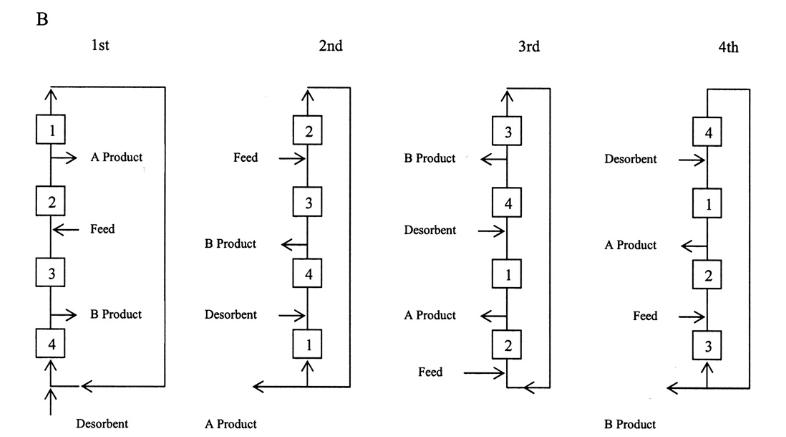A dilute ternary mixture consisting of (mathrm{A}, mathrm{B}), and (mathrm{C}) dissolved in (mathrm{D}) (A is least strongly
Question:
A dilute ternary mixture consisting of \(\mathrm{A}, \mathrm{B}\), and \(\mathrm{C}\) dissolved in \(\mathrm{D}\) (A is least strongly adsorbed and \(\mathrm{C}\) is most strongly adsorbed) is separated in a normal SMB (modify Figure 20-14b for the ternary separation). One product is A (plus D), and the other product is B + C (plus D). The four SMB design Eqs. (20-30) are

Figure 20-14b

a. unchanged.
b. the same except Eq. (20-30b) becomes \(\mathrm{u}_{\mathrm{c}, 2}

c. the same except Eq. \((20-30 \mathrm{c})\) becomes \(\mathrm{u}_{\mathrm{B}, 3}>\mathrm{u}_{\text {port }}\).
![]()
d. the same except Eq. (20-30d) becomes \(\mathrm{u}_{\mathrm{C}, 4}>\mathrm{u}_{\text {port }}\).

e. the same except change Eq. (20-30b) as in answer b and change Eq. (20-30d) as in answer d.


Step by Step Answer:

Separation Process Engineering Includes Mass Transfer Analysis
ISBN: 9780137468041
5th Edition
Authors: Phillip Wankat





